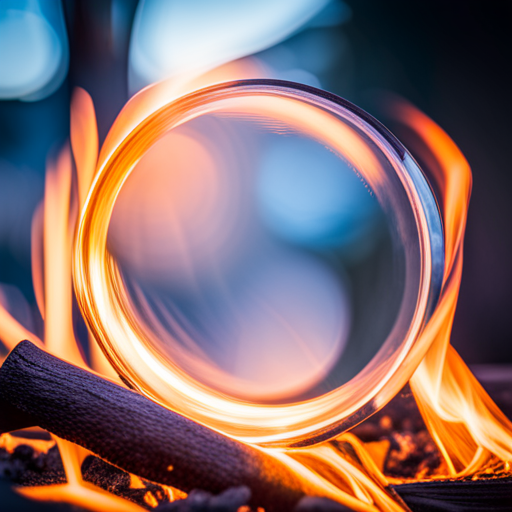
Starting a fire with a lens or the bottom of a glass bottle is an age-old technique that has been used since ancient times. It’s surprisingly easy to do and can be done without any special tools or materials. Here are the steps you’ll need to follow to get your fire started:
1. Find a sunny spot and gather any dry kindling you can find. This could include wood shavings, leaves, or twigs.
2. Place the kindling in a pile in an area that’s sheltered from the wind. Make sure it’s not too close to anything flammable like trees or buildings.
3. Angle your lens (or the bottom of a glass bottle) so that sunlight is focused on the kindling. Keep adjusting the angle until you can see smoke rising from the pile.
4. Once you have created enough heat and smoke, carefully introduce some oxygen to your kindling by fanning with your hand or using a bellow. This will help ignite it.
5. Once the kindling is burning, gradually add larger pieces of wood to your fire until you have a nice and steady flame going.
6. Make sure to always be mindful of safety when setting up and tending your fire. Keep an eye on the flames at all times and make sure that your fire does not spread to any of the surrounding areas.
7. Another important safety tip is to keep a bucket full of water handy in case you need to put out the fire quickly for any reason.
8. Finally, once your fire is burning steadily and safely, enjoy some hot food or drinks over it! You can also make use of its light and warmth to complete other tasks or just savor the moment as you relax.
9. Whether you’re an experienced camper or simply looking for a new way to start a fire, using a lens or the bottom of a glass bottle is one of the most effective methods out there. With just a few simple steps, you can be sure to get a warm and crackling fire going in no time.
Now that you know this method, keep in mind that someone’s discarded glass bottle can inadvertently start a forest fire. It’s important to never litter, and to always use safe practices when camping. This includes not building campfires during times of drought, and always being mindful of where embers may be traveling.
